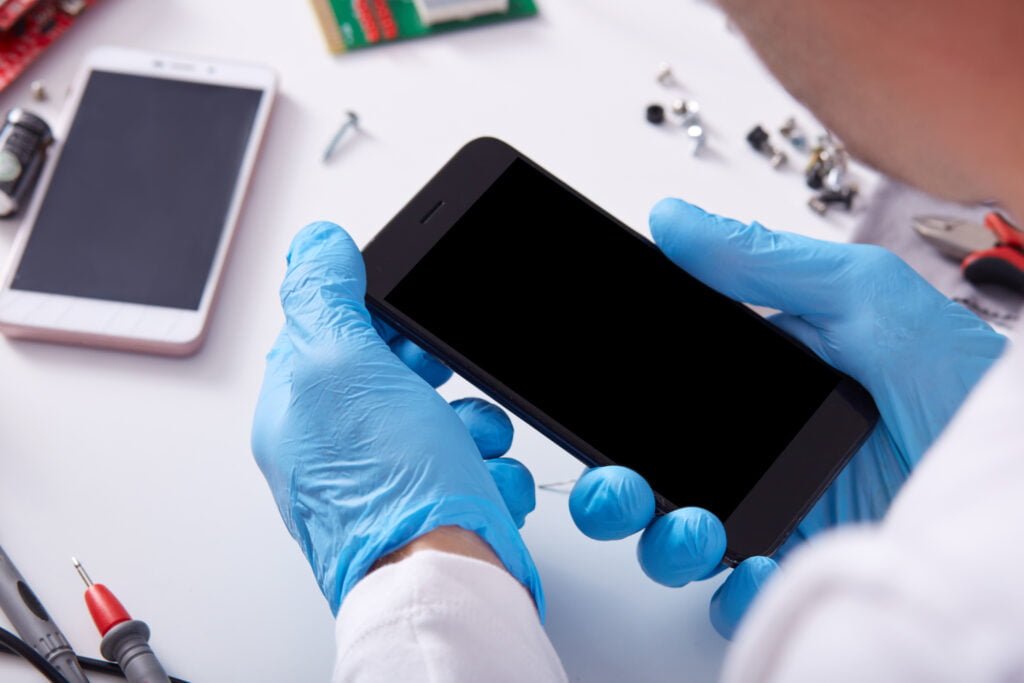Smartphones have transformed into essential instruments that have revolutionized the way we live, work, and communicate in the always-changing world of modern technology. These tiny powerhouses have quickly developed, using cutting-edge technology to offer ever-more complex capabilities.
The FPGA, or Field-Programmable Gate Array, is one such technical marvel that is covertly integrated inside your smartphone. Although “FPGAs” may not be a word that comes to mind as quickly as “camera” or “battery life,” they are crucial to improving the performance and operation of your smartphone.
This article, “FPGAs in Your Smartphone: What You Need to Know,” will delve into the complex realm of these multifaceted hardware components. We’ll solve the riddles surrounding FPGAs, comprehend their importance in the scheme of contemporary electronics, and shed light on their special function in the smartphones that we use daily.
By the time we’re done, you’ll have a thorough grasp of what FPGAs are, how they work within your smartphone, and why they’re essential for supplying power to the gadgets we use every day in the digital age. So let’s start this informative journey into the world of FPGAs on your smartphone.
The Role of FPGAs in Smartphones
As smartphones develop into more versatile gadgets, their internal parts become more specialized to do a variety of functions effectively. FPGAs, also known as field-programmable gate arrays, are essential parts that enhance the functionality and performance of these small computers. We’ll examine the specific uses and applications of FPGAs in cell phones in this section.
A. Overview of Smartphone Hardware Components
Before delving into the role of FPGAs, it’s important to have a basic understanding of the various hardware components that make up a smartphone. A typical smartphone comprises:
- Central Processing Unit (CPU): This is the brain of the smartphone, responsible for executing instructions and running applications.
- Graphics Processing Unit (GPU): The GPU handles graphics-intensive tasks such as rendering images and videos and is crucial for gaming and multimedia experiences.
- Random Access Memory (RAM): RAM provides temporary storage for data that apps and the operating system need for quick access.
- Storage: Smartphones have built-in storage (e.g., NAND flash memory) for long-term data storage, including apps, photos, videos, and other files.
- Battery: The power source that keeps the smartphone running.
- Sensors: These include various sensors like accelerometers, gyroscopes, GPS, and ambient light sensors, which enable features such as motion detection, location services, and auto-brightness adjustment.
- Modems: Responsible for connecting to cellular networks and data communication.
- Camera: The smartphone camera system is a complex combination of sensors, lenses, and processing units.
- Display: The screen that presents the user interface and visual content.
B. Specific Applications of FPGAs in Smartphones
FPGAs are unique among these components due to their programmability and versatility. They serve several specific purposes within smartphones:
- Power Management:
In smartphones, FPGAs play a key role in power efficiency. They can intelligently control power by rearranging their circuitry to dynamically adjust power consumption. For instance, your smartphone’s FPGA can reorganize itself to optimize power usage when you transition from a resource-hungry task like gaming to a more conservative task like reading an e-book. This increases battery life.
- Accelerated Processing:
For applications requiring significant computational capacity, such as artificial intelligence (AI), machine learning (ML), and complex image and video processing, smartphones increasingly rely on FPGA-accelerated processing. FPGAs are indispensable for applications like real-time language translation, augmented reality (AR), and enhanced camera capabilities because they can perform parallel processing jobs with astounding efficiency.
- Customizable Hardware Features:
FPGAs are much more customizable than other fixed hardware components. FPGAs can be programmed by smartphone makers to add distinctive features or functionalities specific to their handsets. With such versatility, it is possible to stand apart in the very competitive smartphone industry. For example, customized AI algorithms, improved security features, or support for specific peripherals like external cameras or medical sensors can all be implemented using FPGAs.
C. Benefits of Using FPGAs in Smartphones
The integration of FPGAs into smartphones offers several advantages:
- Flexibility and Customization: FPGAs enable smartphone manufacturers to adapt and innovate rapidly, accommodating emerging technologies and customizing their devices to meet specific user needs.
- Power Efficiency: By optimizing power consumption, FPGAs contribute to longer battery life, a critical factor in user satisfaction.
- Performance Enhancements: FPGA-accelerated processing provides faster, more responsive experiences in areas like gaming, photography, and AI applications.
How FPGAs Work in Smartphones
To comprehend how FPGAs operate within the confines of a smartphone, it’s imperative to dissect their architecture and understand the intricate mechanics behind these versatile components.
A. FPGA Architecture and Components
An array of configurable logic blocks (CLBs) coupled by programmable routing channels makes up the heart of an FPGA. Numerous fundamental logic components, including flip-flops, multiplexers, and lookup tables, are present in these CLBs. The FPGA’s programmability, which enables designers to configure these logic components to produce unique digital circuits, is the secret to its adaptability.
- Lookup Tables (LUTs): These are the workhorses of FPGA logic. LUTs can be programmed to implement any Boolean function, enabling the FPGA to perform a wide range of tasks.
- Flip-Flops: These are used for storing data temporarily. In the context of FPGAs, they play a crucial role in maintaining the state of the digital circuit.
- Multiplexers: These components are responsible for routing signals within the FPGA, ensuring that data flows seamlessly between various logic elements.
Additionally, FPGAs feature input/output blocks (IOBs) that allow them to interface with external components like sensors, displays, and memory modules. These IOBs make FPGAs exceptionally versatile as they can interact with a variety of peripherals and devices.
B. The Process of Programming FPGAs
Programming an FPGA involves defining the logical functionality and interconnections of its components. This process typically follows these steps:
- Design Entry: This is where the designer defines the desired functionality of the FPGA circuit using a hardware description language (HDL) like VHDL or Verilog. Alternatively, higher-level programming languages like C or Python can be used in some cases.
- Synthesis: The HDL code is synthesized into a netlist, which describes how the logical functions and components map to the FPGA’s CLBs, LUTs, and interconnects.
- Placement and Routing: During this step, specialized software determines how to physically map the synthesized logic onto the FPGA’s physical resources. It decides which CLBs and routing channels to use to meet the design’s requirements.
- Bitstream Generation: The final step involves generating a bitstream file, which essentially encodes the programmed logic into a format that the FPGA can understand. This bitstream is then loaded onto the FPGA, configuring it to execute the desired functions.
C. Real-World Examples of FPGA Use in Smartphones
FPGAs in smartphones are programmed to handle a multitude of tasks, enhancing the user experience and optimizing performance. Here are some real-world examples:
- Image and Video Processing: FPGAs are employed in the image and video processing pipelines, enabling real-time enhancements such as noise reduction, image stabilization, and advanced camera features like computational photography.
- AI and Machine Learning: FPGAs accelerate AI and machine learning tasks by executing complex neural network models efficiently. This results in faster facial recognition, language processing, and augmented reality applications.
- Gaming and Graphics: FPGAs can assist in rendering high-quality graphics, ensuring smoother gameplay and supporting advanced gaming features.
Advantages and Disadvantages
Field-Programmable Gate Arrays (FPGAs) have found their way into smartphones due to their unique characteristics, but like any technology, they come with their set of advantages and disadvantages. In this section, we’ll explore both sides of the FPGA coin in the context of smartphones.
Advantages of Using FPGAs in Smartphones:
- Flexibility and Customization:
Due to the tremendous flexibility of FPGAs, hardware functionality can be altered by manufacturers to suit particular requirements. The ability to customize hardware for different applications because of this versatility is a key benefit of smartphones.
Firmware upgrades from manufacturers can reprogramme FPGAs, boosting the device’s capabilities without requiring a modification to the physical hardware.
- Power Efficiency:
FPGAs are renowned for using little electricity. They can be designed to turn off particular components while not in use, which helps smartphones have longer battery lives.
In the modern era of environmentally conscious consumers, power efficiency is essential for extending the battery life of smartphones.
- Performance Enhancements:
By offloading them from the CPU and GPU, FPGAs can speed up particular activities like image processing or AI calculations. Performance is accelerated and made more effective as a result.
FPGAs can help create smoother, more immersive experiences for jobs like gaming and augmented reality applications.
Disadvantages and Limitations of Using FPGAs in Smartphones:
- Cost Considerations:
Integrating FPGAs into smartphones adds to the production cost, which can potentially translate to higher prices for consumers.
Balancing the cost of FPGAs against the benefits they bring can be a challenge for manufacturers.
- Complexity of Programming:
FPGAs require specialized programming, which can be more complex than writing software for CPUs and GPUs.
Developing and optimizing FPGA firmware can be time-consuming and require a skilled workforce.
- Size and Power Consumption Trade-Offs:
While FPGAs are power-efficient when programmed correctly, their physical size and power consumption can be a concern in compact devices like smartphones.
Striking the right balance between power efficiency and size is a constant challenge for smartphone manufacturers.
Applications and Use Cases
FPGAs in smartphones are not just interesting technological tidbits; they are crucial parts that open up a wide range of applications and use cases, greatly enhancing the functionality of these devices. Let’s explore the intriguing realm of smartphone FPGA applications:
1. Image and Video Processing:
- FPGAs play a crucial role in enhancing the quality of photos and videos captured by smartphone cameras. They can accelerate image processing tasks like noise reduction, image stabilization, and low-light enhancement in real time.
- Video encoding and decoding are also accelerated by FPGAs, enabling smoother video streaming and playback while conserving battery life.
2. AI and Machine Learning:
- With the increasing integration of AI-powered features in smartphones, FPGAs are becoming indispensable. They accelerate machine learning tasks by efficiently executing neural network operations.
- Voice recognition, natural language processing, and facial recognition are some AI-driven features that benefit from FPGA acceleration.
3. Gaming and Graphics:
- FPGAs boost gaming experiences by accelerating graphics rendering and complex physics simulations. They can provide higher frame rates and more detailed graphics in mobile games.
- Real-time ray tracing, a computationally intensive rendering technique, is made feasible in smartphones through FPGA acceleration.
4. Customizable Hardware Acceleration:
- FPGAs offer the unique advantage of hardware customization. Smartphone manufacturers can configure FPGAs to accelerate specific tasks tailored to their devices.
- This customization allows for rapid adaptation to emerging technologies and changing user demands without requiring a complete hardware redesign.
5. Connectivity and Communication:
- In the age of 5G connectivity, FPGAs facilitate faster and more reliable communication. They handle signal processing tasks for seamless wireless communication.
- Additionally, FPGAs can assist with optimizing power consumption in smartphones during data transmission, extending battery life.
6. Augmented and Virtual Reality (AR/VR):
- AR and VR experiences on smartphones rely on complex sensor fusion, 3D rendering, and motion tracking. FPGAs can process these tasks efficiently, delivering immersive experiences.
- Low-latency communication between sensors and the device’s display is critical for AR/VR, a task where FPGAs excel.
7. Enhanced Security:
- FPGAs bolster smartphone security by accelerating cryptographic operations. They can safeguard sensitive data and enable secure transactions, such as mobile payments.
- Hardware-based encryption and decryption processes are less susceptible to software vulnerabilities.
8. Battery Management:
- FPGAs contribute to efficient power management in smartphones. They monitor and optimize power distribution, ensuring that power-hungry components are used judiciously.
- This results in longer battery life and improved energy efficiency.
9. Sensor Integration:
- As smartphones become more sensor-rich, FPGAs can manage the influx of data from various sensors like accelerometers, gyroscopes, and environmental sensors.
- They enable rapid data processing, enhancing the accuracy of applications like fitness tracking and navigation.
In essence, FPGAs in smartphones are versatile workhorses that empower these devices to handle a diverse range of tasks. From delivering stunning visuals in games and videos to securing your data and improving battery life, FPGAs are the unsung heroes behind the scenes, constantly optimizing and enhancing your smartphone experience. As technology continues to advance, we can expect even more innovative applications and use cases for FPGAs in the ever-evolving world of smartphones.
Challenges and Future Developments
As we’ve explored the remarkable capabilities of FPGAs within smartphones, it’s important to acknowledge the challenges and exciting future developments in this field.
Challenges:
- Cost Considerations: The expense of incorporating FPGAs into smartphones is one of the main obstacles. Historically, fixed-function ASICs have been more expensive than FPGAs. For smartphone manufacturers, balancing the additional cost of FPGAs with the advantages they provide can be a delicate financial factor.
- Complexity of Programming: Specialized skills and equipment are needed to program FPGAs. They require knowledge of FPGA design and verification, which can be difficult and time-consuming, to integrate into smartphone designs. Longer development cycles may also be a consequence of this complexity.
- Size and Power Consumption Trade-offs: Size and power consumption are trade-offs that are present in FPGAs. The versatility of smaller FPGAs may not be as great as that of larger ones, and more potent FPGAs typically use more energy. An important engineering difficulty is balancing the size, power, and functionality of FPGAs in cell phones.
Future Developments:
- Miniaturization: FPGAs are probably going to get smaller and more power-efficient as semiconductor fabrication technology develops. As a result, more powerful FPGAs can be integrated inside cellphones without dramatically expanding their size or power requirements.
- Improved Tools and Libraries: Substantial research and development is going on in the area of creating tools and libraries for FPGA programming. The potential of FPGAs will be more readily realized by smartphone manufacturers as these technologies grow more powerful and user-friendly.
- AI and Machine Learning Integration: Due to their capacity for parallel processing, FPGAs are a good choice for AI and machine learning activities. FPGAs will likely play a bigger part in allowing on-device AI and enhancing the effectiveness of machine learning algorithms on smartphones in the future.
- Security Enhancements: FPGAs could be used to improve hardware security as concerns about smartphone security and privacy grow. They can be set up to establish physically enforced security borders that shield sensitive information and operations from outside dangers.
- Customization: FPGAs will continue to enable smartphone users to customize their devices to a greater extent. Users might be able to reprogram their smartphones to suit their specific needs, leading to a new era of personalization.
Conclusion
Your smartphone’s FPGAs are the unseen powerhouses that greatly expand its capabilities. We have seen how these adaptable parts enhance performance, optimize power, and allow for customization.
However, there are obstacles like expense and complexity. But there is hope for the future. As well as better tools, AI integration, stronger security, and more customizable FPGAs, these developments are in the future.
In conclusion, FPGAs continuously influence the progress of your smartphone while going unnoticed. They will continue to have an impact, ensuring that your device remains a center for innovation, security, and customization.


![What is FPGA Introduction to FPGA Basics [2023] computer-chip-dark-background-with-word-intel-it](https://fpgainsights.com/wp-content/uploads/2023/06/computer-chip-dark-background-with-word-intel-it-300x171.jpg)









